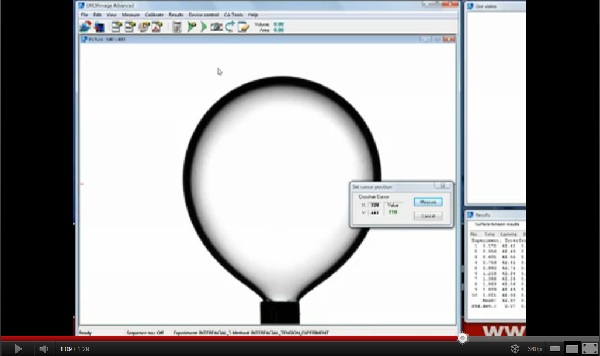|
January 2012 |
|
| Fracking and Surface Tension | |
|
Recent technological innovation and horizontal drilling have made hydraulic fracturing (aka fracking) a boon to the natural gas and oil industries and is also becoming a topic of concern. Induced hydraulic fracturing consists of pumping fracking fluid (which is mostly water) into the ground at high pressures in order to crack the rock structures allowing the fracking liquids to continue further into the rock and eventually allowing gas and oil to be released from shale formations. The cracks are held open using a proppant added to the fracking liquid. The proppant consists of high-strength man-made particles which are typically the size of grains of sand. The fracking fluid also contains about 2% chemicals - the source of concern due to their potential seepage into drinking wells and the environment. Some of the chemical additives are toxic, some are known carcinogens: boric acid (kidney damage), methanol (toxic), lead (damage to nervous system), and benzene (causes cancer). Not only are many of these chemicals left in the ground, but most of the residual fracking waste is disposed of in injection wells - often far from where the original fracking occurred. In addition to the toxicity issue, their is now a question of how much impact these wells have on local seismic activity. For example, in Ohio regulators shut down wells after recent minor earthquakes in the area of Youngtown. (WSJ, "Ohio Shuts Wells Following Quakes", Jan. 3, 2012, p.A3). One common additive to fracking solutions is isopropanol (aka isopropyl alcohol) which acts as a surfactant and works to lower the surface tension of the fracking fluid in order to improve liquid recovery from the well. The surface tension of isopropanol is 21.7 mN/m at 20° C while the surface tension of water is 72.75 mN/m at the same temperature. Another surfactant which also acts as a foaming agent is 2-butoxyethanol (aka 2-BE) with a surface tension of about 27 mN/m at room temperature. Methanol is also a surfactant with a surface tension of 22.5 mN/m at 20° C Due to the potential toxicity of of these additives (isopropanol affects the liver, 2-BE causes hemolysis, and methanol is highly toxic in humans) and the increased scrutiny the gas industry is facing from environmental regulators, researchers are exploring alternatives which not only present fewer environmental concerns but have improved viscoelastic properties. Methods that improve efficiency will also use a smaller volume of fracking chemical which in turn will reduce the disposal challenges. Researchers are turning to ramé-hart for tools not only to measure surface and interfacial tension (Goniometer / Tensiometer) but also surface dilatational viscosity (Oscillator). To determine the effect of temperature on surface or interfacial tension, the Environmental Chamber is a critical component. Further innovation will produce not only more successful fracking fluids and methods but result in the development of additives which are more effective and environmentally friendly. |
|
| Interfacial Tension | |
|
Researchers (including who are working on
improving fracking methods) are highly interested in the behavior of oil
and water and their interaction with surfactants and dispersants.
Interfacial tension plays a critical role in understanding the cohesive
energy at the interface of two immiscible liquids. When the drop phase
is lighter (i.e., has a lower density) than the external phase, we use
an inverted needle to produce an inverted (or upside down) pendant drop
as shown in the video below (or click here
http://youtu.be/-9BwXOWJgKE).
When the droplet phase is heavier, then a standard pendant drop is used.
In order to produce an accurate measurement, the drop needs to be large enough for the effect of gravity to elongate it. Just as gravity pulls a conventional drop downward into a pendant shape (which is necessary to measure surface tension), in the video above an oil drop is pushed upward due to the difference in density and the effect gravity has on the drop. Surface and interfacial phenomena play an important role in many facets of oil and gas recovery. Any ramé-hart tool equipped with DROPimage Advanced software has the potential to provide meaningful data which can unlock new methods and chemicals for safely and efficiently extracting valuable energy resources from the earth. |
|
|
|


